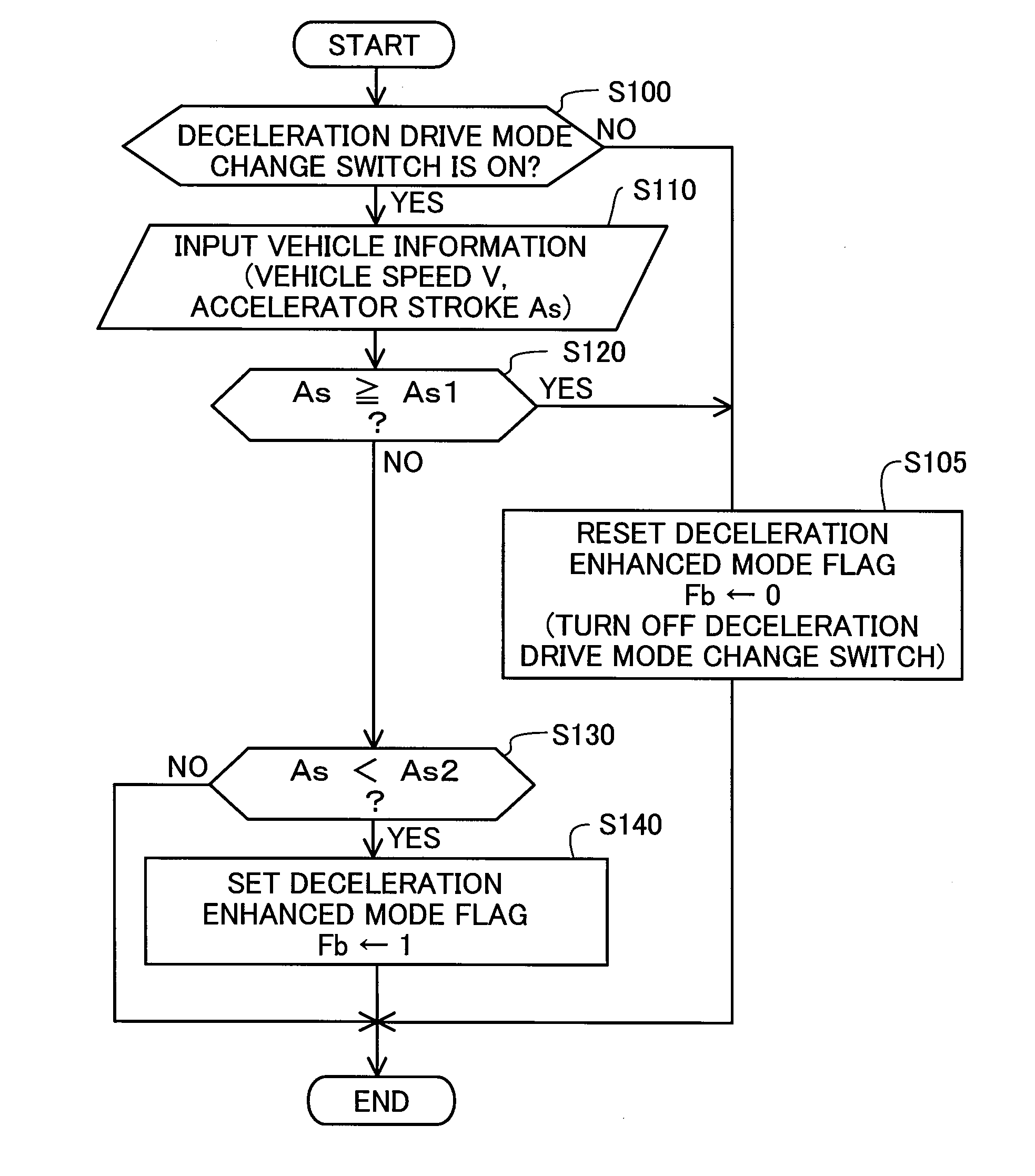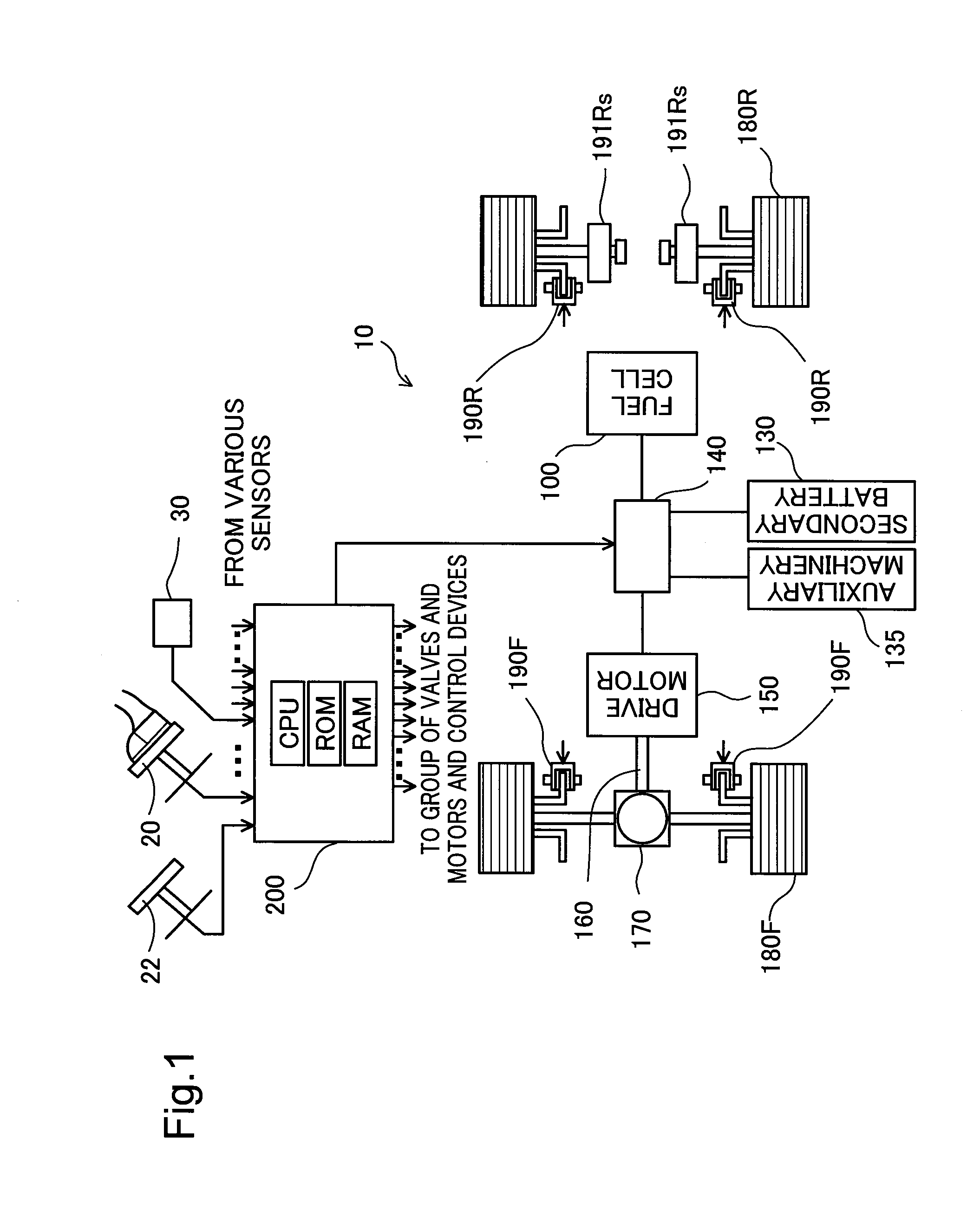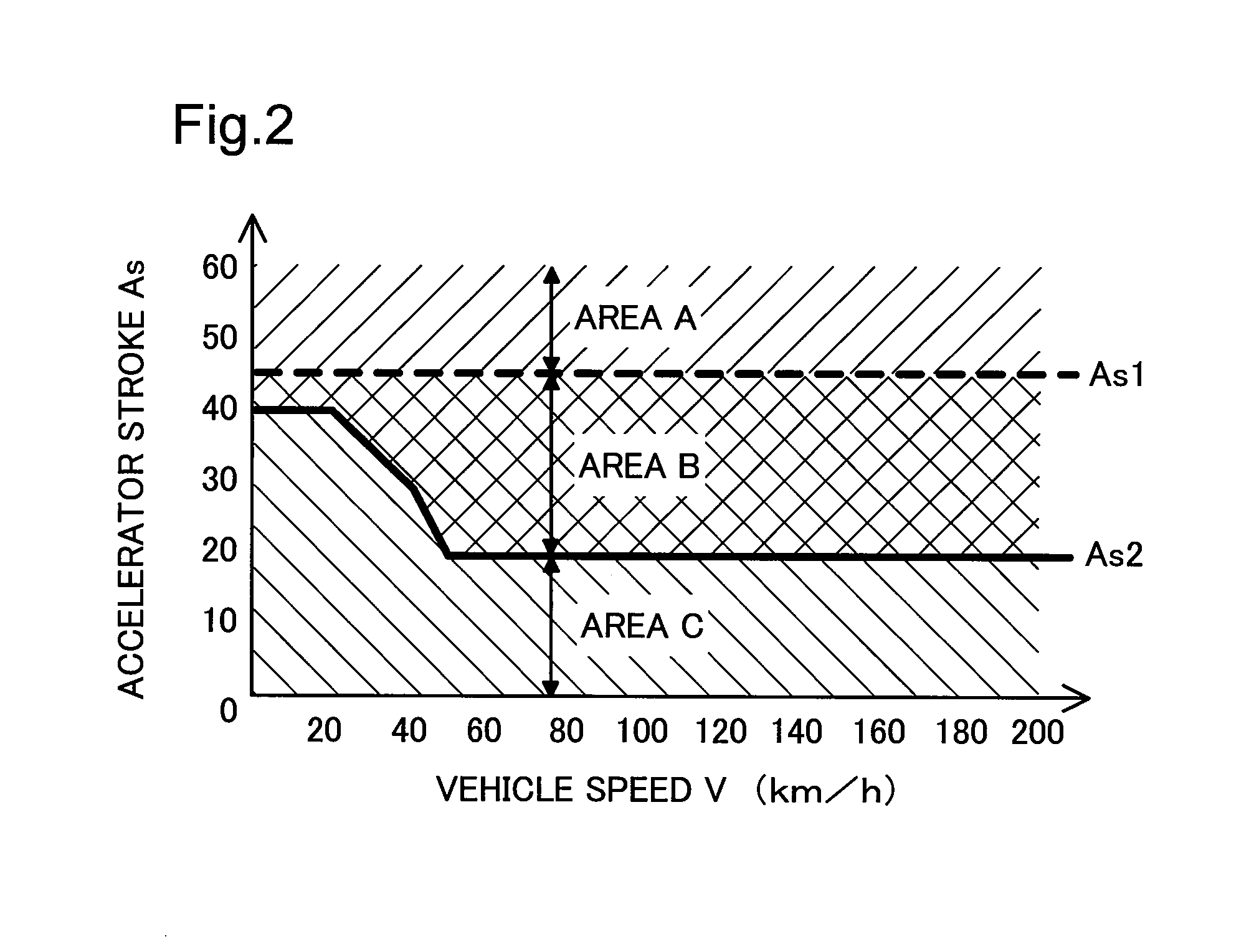Vehicle
a technology for vehicles and engines, applied in the field of vehicles, can solve the problems of providing strangeness and not providing significant deceleration of vehicles, and achieve the effects of relieving the driver's load, and reducing the frequency of returning
- Summary
- Abstract
- Description
- Claims
- Application Information
AI Technical Summary
Benefits of technology
Problems solved by technology
Method used
Image
Examples
Embodiment Construction
[0022]The following describes an embodiment of the invention with reference to the accompanied drawings. FIG. 1 is a diagram schematically illustrating the configuration of a vehicle 10 according to an embodiment of the invention. The vehicle 10 includes a fuel cell 100, a controller 200, a secondary battery 130, auxiliary machinery 135, a distribution controller 140, a drive motor 150, a driveshaft 160, a distribution gear 170, front wheels 180F, rear wheels 180R, front wheel brakes 190F and rear wheel brakes 190R. The vehicle 10 of the embodiment is a front-wheel drive vehicle, so that the driving force of the drive motor 150 is transmitted from the driveshaft 160 to the front wheels 180F and is more specifically distributed by the distribution gear 170 into the left and right front wheels 180F. The front wheel brakes 190F and the rear wheel brakes 190R are respectively provided on the front wheels 180F and the rear wheels 180R as hydraulically-actuated disk brakes and are control...
PUM
 Login to View More
Login to View More Abstract
Description
Claims
Application Information
 Login to View More
Login to View More - R&D
- Intellectual Property
- Life Sciences
- Materials
- Tech Scout
- Unparalleled Data Quality
- Higher Quality Content
- 60% Fewer Hallucinations
Browse by: Latest US Patents, China's latest patents, Technical Efficacy Thesaurus, Application Domain, Technology Topic, Popular Technical Reports.
© 2025 PatSnap. All rights reserved.Legal|Privacy policy|Modern Slavery Act Transparency Statement|Sitemap|About US| Contact US: help@patsnap.com



